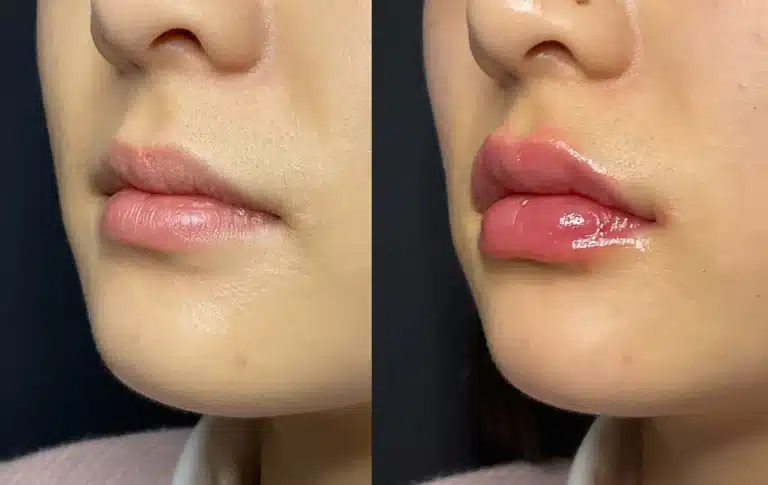
Social media platforms and popular culture often amplify specific aesthetic trends, leading to increased patient requests for distinct looks like the “Cherry Lips” style. This particular aesthetic typically involves creating pronounced, centrally focused volume in both the upper and lower lips, mimicking the shape of two pairs of cherries, often accompanied by a sharply defined Cupid’s bow and relatively less fullness laterally. While understanding patient desires is important, for medical aesthetic practitioners, approaching such trends requires critical analysis, not just imitation.
This guide provides a professional perspective on the Cherry Lips technique analysis, focusing on crucial patient assessment factors, anatomical safety considerations, and the paramount importance of selecting appropriate hyaluronic acid (HA) fillers, rather than serving as a procedural “how-to.”
Anatomical Precision & Safety: The Foremost Concern
Any lip augmentation procedure demands a thorough understanding of the intricate anatomy of the perioral region. The lips are highly vascular and dynamic structures. Techniques aiming for specific projection points, like those potentially used to achieve a “Cherry Lips” effect, necessitate heightened awareness of:
- Key Structures: Precise knowledge of the vermillion border, wet-dry border, lip tubercles (natural pillows of the lip), philtral columns, and the orbicularis oris muscle is fundamental.
- Vascular Anatomy (Critical): The superior and inferior labial arteries, branches of the facial artery, run within the lip tissues, typically submucosally or intramuscularly. Their depth and course can vary. Aggressive or poorly placed injections, particularly deep central ones, carry an inherent and significant risk of vascular occlusion (VO). A VO in this area can lead to tissue necrosis if not recognized and managed immediately with hyaluronidase. Vascular safety in lip injections must always be the top priority.
- Injection Plane: Achieving central projection usually involves precise dermal filler placement in specific anatomical planes (e.g., submucosal or potentially intramuscular, depending on technique and desired effect). Injecting too superficially can lead to lumps or Tyndall effect, while injecting too deeply or into the wrong structure increases risks.
Mastery of lip anatomy for fillers and adherence to safe lip augmentation principles, including aspiration techniques (where appropriate and debated) and slow injection speeds, are non-negotiable prerequisites for any advanced lip shaping, overriding the pursuit of any specific trend.

Patient Assessment and Consultation: Beyond the Trend
Not every patient is a suitable candidate for every aesthetic trend. A thorough consultation is essential before considering techniques aimed at achieving a “Cherry Lips” look:
- Evaluating Suitability: Consider the patient’s natural lip shape, volume, and symmetry. Lips that already possess some central fullness or well-defined tubercles may be more amenable. Very thin lips or those with significant asymmetry might require foundational work first or may not achieve the desired specific shape naturally. Assess tissue quality and elasticity.
- Facial Harmony: Critically evaluate how the requested lip shape fits within the patient’s overall facial features and proportions. A lip style that looks appealing in isolation might appear incongruous on a particular individual. Professional judgment must guide the treatment plan.
- Managing Expectations: Patients often bring inspiration photos from social media. It’s vital to conduct a realistic assessment, explaining what is achievable based on their unique anatomy versus idealized or potentially filtered images. Discuss longevity, the potential need for multiple sessions or touch-ups, and the inherent risks involved in any filler procedure. A comprehensive lip filler consultation is key.
- Ethical Considerations: Ensure the patient’s motivations are sound and the request aligns with ethical practice standards. The goal should be enhancement that respects natural anatomy and promotes well-being, not merely replicating a fleeting trend. Determining suitable candidates for lip augmentation requires careful clinical and ethical judgment.
Filler Selection: Rheology is Paramount for the “Cherry Lips” Technique
Achieving the specific combination of central projection, defined borders, and a soft, natural feel characteristic of the desired “Cherry Lips” aesthetic heavily depends on choosing an HA filler with the right rheological properties. Overly firm fillers can create unnatural stiffness or lumps in this mobile area, while overly soft fillers may not provide sufficient definition or projection. Key lip filler properties to consider include:
- Moderate G Prime (Elasticity): The filler needs enough firmness (G’) to provide lift and hold the desired shape centrally, creating projection. However, it must not be excessively high, as this can lead to a stiff, unnatural feel in the highly dynamic lips. A balance is needed.
- Good Cohesivity: The gel needs sufficient cohesivity to hold together and maintain its shape after injection, resisting excessive spread. This helps create defined “cherry” shapes centrally. A high-quality cohesive lip filler is often preferred.
- Excellent Tissue Integration: Despite needing projection, the filler must integrate smoothly into the surrounding lip tissue to avoid palpable edges or visible lumps, especially as the filler settles. Technologies promoting smooth integration are advantageous.
- Moldability (Variable): Some practitioners may prefer a filler that allows for gentle molding post-injection to refine the shape, while others prioritize a filler that holds its injected shape precisely.
Practitioners planning to buy lip fillers online specifically for techniques like this should prioritize products known for this balance of moderate G’, good cohesivity, and smooth integration. Analyzing HA filler properties for lips is crucial. When evaluating options to order HA lip fillers, consider families like Restylane (e.g., Kysse, potentially Refyne), Juvederm (e.g., Volbella XC, potentially Ultra XC depending on volume goal), or Belotero (e.g., Lips Shape/Contour, Balance). The choice of the best filler for lips using this technique is highly dependent on the patient’s tissue, desired projection, and practitioner’s experience with the specific product’s handling. Consulting resources comparing specific filler rheology can be beneficial.
Sourcing Authentic and Appropriate Fillers: A Professional Imperative
Performing specialized injection techniques safely and effectively necessitates the use of authentic, high-quality, medical-grade HA fillers. The risks associated with counterfeit or improperly stored products are amplified when precise placement and predictable product behavior are required.
- Authenticity Guarantee: Only buy medical grade HA fillers from licensed, reputable B2B suppliers. Verify their sourcing practices and ensure they guarantee genuine products from the original manufacturers.
- Regulatory Compliance: Use only fillers that meet regulatory standards (e.g., FDA-approved products if practicing in the US). Stay informed via official resources like the FDA’s list of approved dermal fillers.
- Reliable Partnership: Establish a relationship with a trusted professional aesthetic supplies online distributor, like Health Supplies Plus, that understands the importance of product integrity and provides reliable service when you order fillers B2B. An authentic lip fillers supplier is crucial for patient safety.
Conclusion: Balancing Aesthetic Trends with Professional Responsibility
The “Cherry Lips” aesthetic represents a specific trend that requires more than just attempting to replicate a shape. It demands meticulous patient assessment, a profound understanding of lip anatomy and vascular safety, precise (and appropriately trained) injection technique, and critically, the selection of an HA filler with suitable rheological properties for central projection and natural integration.
While acknowledging patient interest in trends is part of modern aesthetic practice, the practitioner’s commitment to safety, ethical considerations, realistic outcomes, and expert judgment must always guide the treatment plan. Delivering beautiful results starts with responsible practice and reliable sourcing of high-quality materials.

About the Author: Doris Dickson is a specialist writer for Health Supplies Plus, focusing on the aesthetic medicine industry. She diligently researches cosmetic treatments and products to provide clear, concise information relevant to licensed medical professionals. Her work supports Health Supplies Plus’s commitment to being a reliable informational resource and trusted supplier for the aesthetic community.
Disclaimer: The content provided in this article is intended for informational purposes only and is directed towards licensed medical professionals. It is not intended to be a substitute for professional medical advice, diagnosis, or treatment, nor does it constitute an endorsement of any specific product or technique. Practitioners must rely on their own professional judgment, clinical experience, and knowledge of patient needs, and should always consult the full product prescribing information and relevant clinical guidelines before use. Health Supplies Plus does not provide medical advice.
